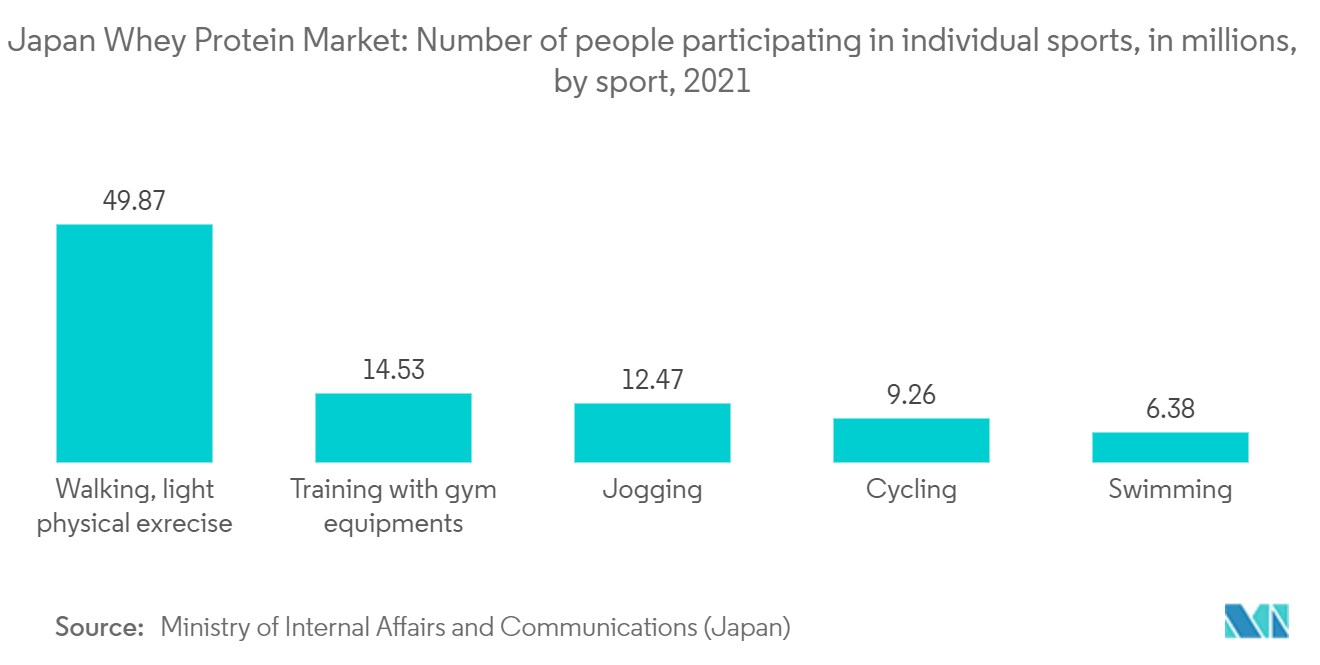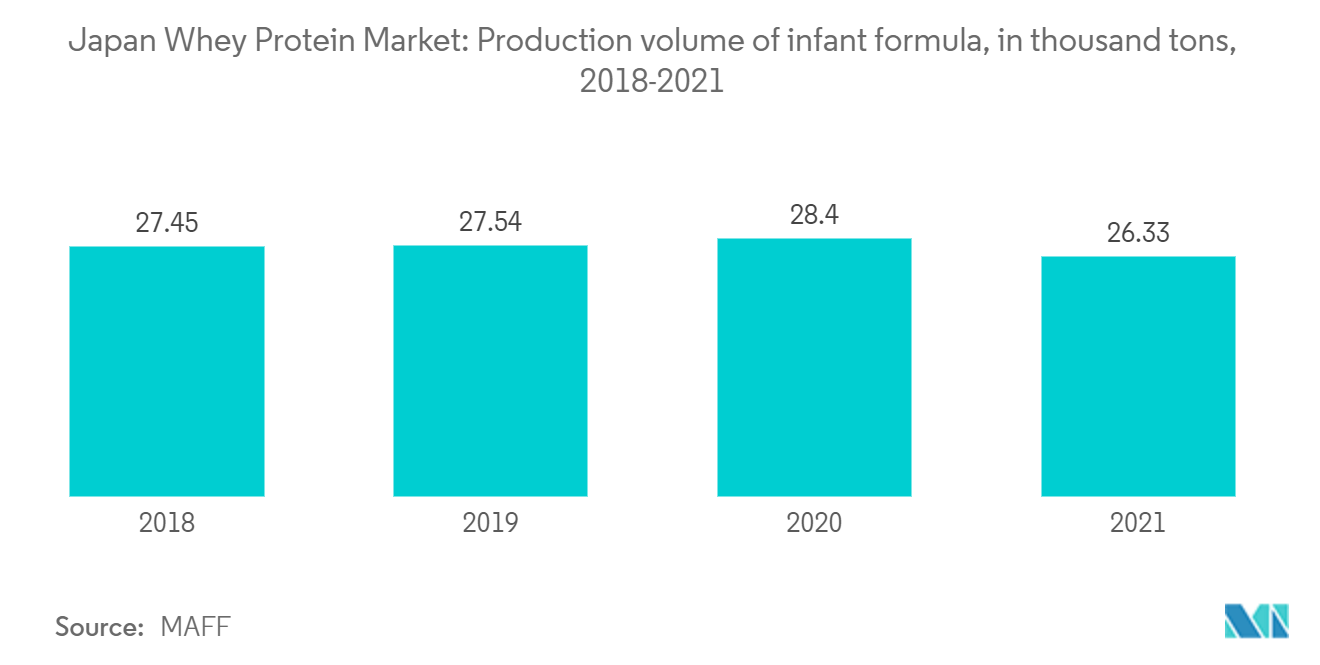Market Trends of Japan Whey Protein Industry
Sports and Performance Nutrition Dominates the Market
- In Japan, consumers are willing to live a healthy and active lifestyle, and those who are recreationally active are increasingly opting for some sports nutrition products to complement their workout sessions and obtain more purified nutrients.
- According to the Ministry of Internal Affairs and Communications (Japan), in 2021, the share of people over ten years old participating in sports in Japan amounted to 66.5 percent. The protein-rich supplements containing whey proteins effectively produce the desired physique, as they are considered a complete protein that is easy to digest. They also improve the overall protein intake of the body.
- With more consumers in the market participating in various sports such as soccer, baseball, volleyball, tennis, and other sports that require a certain amount of physical fitness, they tend to consume whey protein products such as powdered supplements and shakes to meet the physical fitness requirement of the sport. Thus, the consumer demand for whey protein in various forms, such as powders and supplements, is increasing in Japan.

Inclination Toward Protein-Rich Food among infants and adults
- The absolute number of high-protein food and drink introductions has experienced strong growth over the past years, making it high in protein and one of the most substantial growing claims in the food and drink market. Additionally, consumers and athletes seek natural, less processed nutritional solutions with proven benefits. Many dairy ingredient manufacturing companies are launching new nutritional solutions to support sports nutrition manufacturers.
- For instance, in December 2021, Lactalis Ingredients launched high-protein concepts with two native protein sources, including Ponativ's Native Micellar Casein and Pronativ's Native Whey Protein, targeting sports nutrition and healthy aging.
- On the other hand, the usage of infant formulas in Japan has increased significantly. For instance, in a study on breastfeeding prevalence in Japan, according to the World Health Organization - Infant and Young Child Feeding (WHO-IYCF) indicator published in PubMed Central 2021, about half of the infants received infant formula for the first time within the first three days of life.
- According to the Japan Dairy Association, in 2021, the export volume of infant formula preparations made from milk products from Japan amounted to around 8.7 million kg. Baby milk exports steadily increased within the last decade, with major domestic manufacturers like Meiji Holdings and Morinaga Milk Industry exporting preparations and ingredients overseas. The rising consumption of infant formulas is further promoting the sale of milk protein ingredients in the market.


